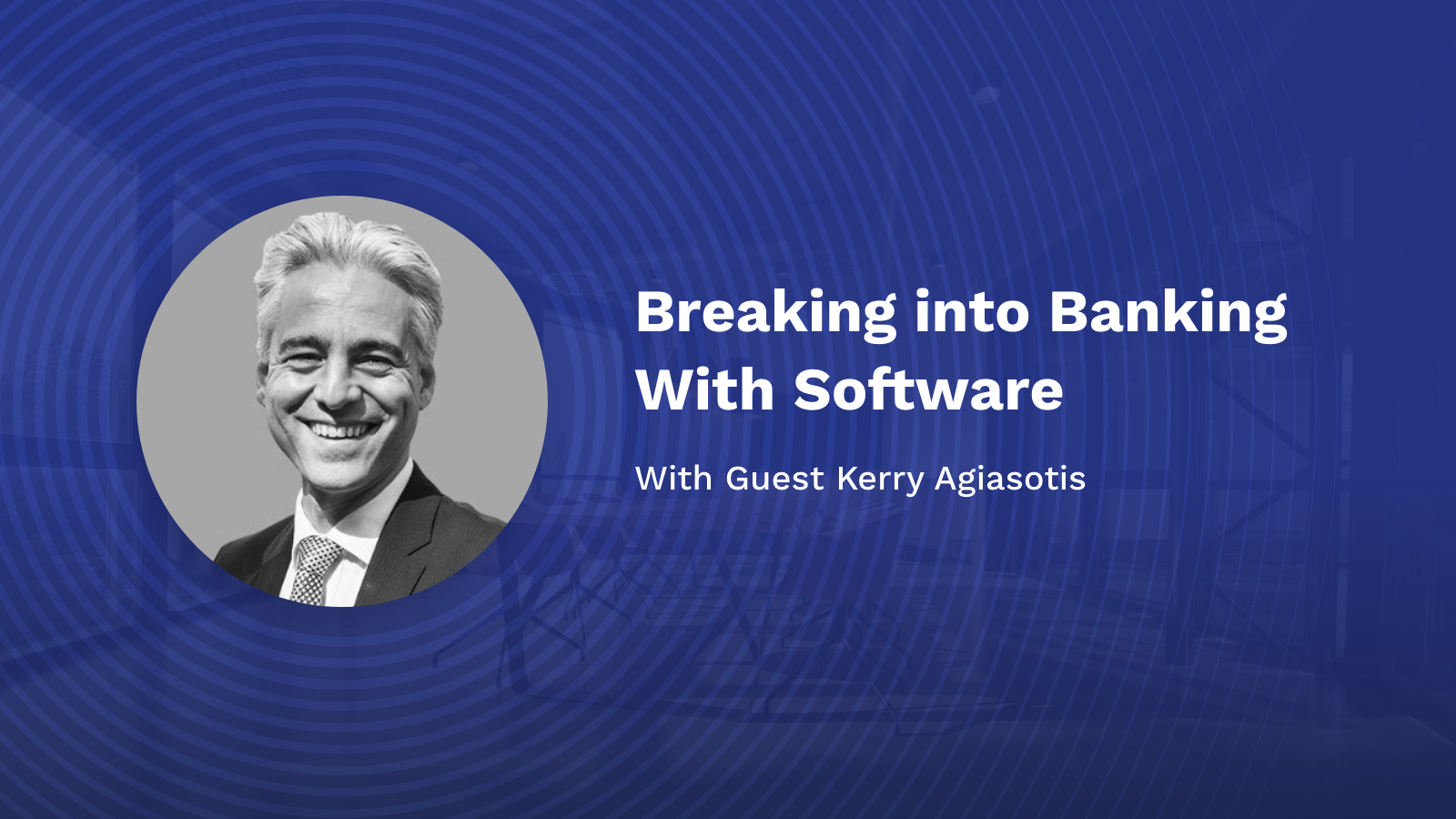
Breaking into Banking With Software with Kerry Agiasotis
Kerry Agiasotis possesses over 25 years of senior leadership, business management, sales, and consulting experience gained primarily within the technology and financial services industries. Most recently, Kerry was appointed as President of The Access Group Asia-Pacific. Kerry has amassed his experience through various leadership roles at Sage, Oracle Corporation, Siebel Systems, Travelex, and Western Union, as well as his own business and technology consultancy practice serving SMEs.
In this episode of If I Ran the Bank, Kerry Agiasotis joined FISPAN’s Clayton Weir to discuss the convergence of the software and financial services industries and how that affects the future of accounting systems and business banking.
Sage
Sage is a SaaS provider of business management, which serves small to medium-sized businesses, assisting with their core business operational platforms like accounting, payroll, HR, and more. Sage also serves accountants, addressing “the needs of small to mid-size accounting firms in tax and practice management,” said Agiasotis. Serving these bookkeepers and accounting firms allows Sage to better understand their clients, the way they manage small businesses, and how the industry is digitizing to provide new services.
“As an example, Sage serves about 7,000 odd bookkeepers, small to midsize practices who touch close to about a million businesses and in excess of a couple of million individuals,” said Agiasotis. That’s a large, important ecosystem that relies on trust. Bookkeepers and accounting firms are managing the relationship between their business clients and the government. That means the financial welfare of that organization, in the eyes of the government, is something that all businesses care about. When it comes to software and financial services, Agiasotis sees “those industries blurring and crossing over in terms of competition to drive value add in very, very similar spaces.”
Protect and Expand
Sage has been around since 1981 and has garnered a large customer base and recurring income, and is now looking at how to protect and expand.
At the core of running a business, you look at your profits and losses which is essentially managing inflows and outflows. That data is tied to the banks that you work with and have relationships with. The first cross-over we saw in this space was AP and AR integrations, with bank feeds for reconciliation, receivables, and integration into payment systems for payables.
For Sage, to protect their software income stream, they look to add value for their clients. “Sage is willing to actually subsidize some of the costs associated with that activity in order for me to continue winning that client,” Agiasotis said. With a financial profile and established income stream, Sage has an advantage crossing over into the financial services industry because they are not focused on monetization in the same way. FinTechs are focused on monetizing payments and banks have significant infrastructure-related costs. “If Sage can play on other people's rails and can subsidize that a little bit, what that results in is increased customer acquisition, retention, or buying.” Agiasotis said, adding “that's how they monetize it.”
That’s where the lines begin to blur — software entering the financial services industry — effectively subsidizing their entry by core software income.
“I'm fundamentally concerned that one day, banks wake up to the fact that they could be providing the same type of capabilities that we do at the very core of what businesses need. Because at the very core, those small businesses aren't really doing accounting with accounting software. They're essentially managing payables and receivables. And at the very core, that's what they can do with their banks.”
In the last decade, we’ve seen the proliferation of SasS and Cloud software which has allowed businesses of any size to now access a level of sophistication they never had before. Businesses now find themselves bouncing between different applications to solve different needs within their workflow. Sage is trying to solve that by consolidating their capability within the Sage product so they need fewer outside applications.
Global Adoption
“Regulation always changes environments and industry,” Agiasotis said. We’ve seen in Europe how, with regulation, there will be innovation and greater levels of adoption around those topics. In Australia, they have a smaller marketplace but one of the most competitive concentrations of financial services globally. “You have every vendor, probably pretty much every industry, competing in this market because really it's a doorstep into one of the largest markets in the world in Asia.”
In Asia-Pacific, you see high levels of technological adoption. For example, Agiasotis said close to 90% of small businesses are using accounting software in some form, but not necessarily for accounting. They use it for tools like invoicing and receivables. “What every software provider has been scrambling over is getting access to banking information for reconciliation and integrating into payment systems,” said Agiasotis, also indicating that “faster payments still aren’t pervasive in Australia, but it’s coming.”
__
Listen to Kerry on the full episode of the If I Ran the Bank podcast on Apple Podcasts, Spotify, Google Podcasts, Amazon Music or by visiting the If I Ran the Bank website.



